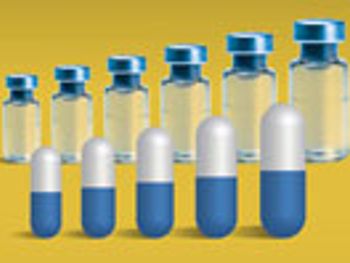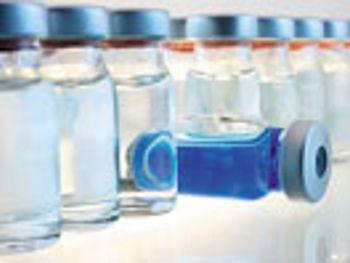
Employing continuous manufacturing and data analytics will help improve the efficiency of pharmaceutical manufacturing in the facility of the future.
Jennifer Markarian is manufacturing reporter for Pharmaceutical Technology.

Employing continuous manufacturing and data analytics will help improve the efficiency of pharmaceutical manufacturing in the facility of the future.

The challenge of achieving zero visible defects (i.e., particulates) in parenteral drugs will require a coordinated effort at all stages of the supply chain, particularly in the production and filling of primary containers.


Appropriate cleaning procedures are crucial for any cGMP aseptic or sterile pharmaceutical manufacturing process, including vial filling; operators share best practices for cleaning.

Preventing contamination requires quality systems to be in place, including routine cleaning, a robust cleaning validation program, and preventive maintenance.

Operator attention to detail and adherence to procedures are crucial for proper cleaning.

Paperless operations improve efficiency and increase assurance of product quality.

MES has already rewarded early adopters by reducing errors; next-generation technology will enable broader data analysis.

Paperless operations improve efficiency and increase assurance of product quality.

Choosing the correct shipping solutions, including packaging, transportation mode, and monitoring, helps mitigate the risks inherent in global logistics.


Improved characterization of twin-screw extrusion enables increasing use in pharmaceutical manufacturing.

Presenters at IVT's Microbiology Week discussed best practices and recent guidance publications for microbial control in sterile and non-sterile pharmaceutical processes.

Although full traceability is not required by law in the US until 2023, companies could benefit from implementing it now.

Economic benefits, equipment availability, research results, and FDA support are driving progress in continuous processing.

Experts discuss some of the latest trends in buying and selling used pharmaceutical equipment assets.

Quality-by-design tools improve efficiency in scale-up of pharmaceutical processes.

A drug-product manufacturing classification system (MCS) for oral solid-dosage forms is proposed by an Academy of Pharmaceutical Sciences working group.

Multivariate data analysis (MVDA) is being used to effectively handle complex datasets generated by process analytical technology (PAT) in biopharmaceutical process development and manufacturing.

Use of modeling software can help improve process understanding, and can be used in open- or closed-loop control.

Real-time, noncontact imaging and spectroscopy techniques provide insight into pharmaceutical processes.

Advances in process modeling and use of open-architecture control models will lead to more efficient process control methods.

New guidelines and best practices may lead to improved quality and reduced recalls due to visual defects.

Pre-sterilized, nested syringes and vials are seeing increased use in sterile filling.

FDA funded projects at Rutgers' C-SOPS and at UMass Lowell to develop flow-sheet model algorithms for use in risk assessment, and start-up company Continuus Pharmaceuticals is making progress on their integrated system.

Robots are proving advantageous in filling, inspection, packaging, laboratories, and the manufacture of personalized medicine.

Although some aspects of process validation for continuous processes are the same as those for traditional batch processes, there are some unique considerations.

A G-CON, GEA, and Pfizer collaboration developed a PCMM (portable, continuous, miniature, and modular) system to produce oral solid-dosage drugs.

Manufacturers using highly potent APIs must examine cross-contamination routes and determine acceptable limits.

Micronization and other processes are used to obtain optimal particle characteristics for pulmonary and oral solid-dosage delivery.